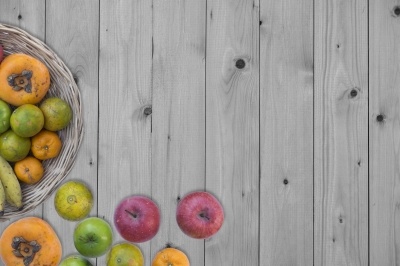
Trying to prevent fruit from decaying and so prolong shelf-life is a common objective for anyone in the supply chain. There are a number of indices signifying to the consumer that a fruit has gone beyond its shelf-life, browning, the appearance of mould which turns the fruit green, a fermented aroma to name but a few. There are a few post-harvest treatments that might help those wanting to extend the shelf-life of fruits and we describe a few below.
Most methods attempt to inhibit both enzymic and non-enzymic browning and we have looked briefly at specific anti-browning methods. Steam blanching of mango slices (Ndiaye et al., 2008) inactivated both peroxidase (POD) and polyphenoloxidase (PPO) after 7 minutes max. through denaturation. PPO appears more robust an enzyme than POD so treatments need to be aimed at minimising its impact. Although the method minimised browning, its effect on the non-enzymic form was negligible. Hence, a recent article (Zheng et al., 2011) looked at oxalate dips for mango slices then stored at ambient conditions as a means to inhibit browning although oxalic acid is a nutritional issue and may compromise the stabilisation benefit. It appeared to activate both POD and PPO which sounds counter-intuitive unless the phenolic levels in the fruit were raised. Oxalate appeared to suppress browning and would be promising in reducing cold storage costs.
Use of Ozone
Ozone has now been available for over a century for disinfecting water supplies and is also used now to kill micro-organisms by strong oxidation of cell membranes. It is more powerful by 50%, than chlorine (Xu, 1999) although this treatment has found favour in the shelf-stabilisation of lettuce and other soft tissue produce such as strawberries (Perez et al., 1999). One benefit for ozone is that it decays rapidly with a half-life of 20 minutes in water at room temperature (Graham, 1997), can also neutralise other chemicals such as pesticides on the fruit/vegetable surface (Langlais et al., 1991) and even promote vitamin C accumulation in fruit when stored in an atmosphere at cool temperatures (Perez et al., 1999). Ozone is not always successful because it failed to destroy Botrytis spores on tomatoes if they were protected within the skin (Ogawa et al., 1990) and it can destroy important aroma compounds (Perez et al., 1999).
It would also be worth exploring the more novel forms of blanching. Take infra-red dry blanching which has been successfully applied to the treatment of mangos. Here, the loss of both colour and nutrients has been taken to a minimum because polyphenoloxidase (PPO) is inactivated during the process (Guiamba et al., 2015).
Not all the methods for post-harvest treatments are covered here but as I seek more, I will edit this post to give a more comprehensive view of them.
Revision: 1st 27th December 2015 – addition of item on blanching.
References
Guiamba, I. R.F., Svanberg, U. and Ahrné, L. (2015), Effect of Infrared Blanching on Enzyme Activity and Retention of β-Carotene and Vitamin C in Dried Mango. Journal of Food Science, 80: E1235–E1242. doi:10.1111/1750-3841.12866
Langlais, B., Reckhow, D.A., and Brink, D.R. (1991). Practical applications of ozone: Principle and case study. In: Ozone in Water Treatment, Lewis Publishers, Michigan.
Ndiaye, C., ShiYing, X., Zhang, W. (2009) Steam blanching effect on polyphenoloxidase, peroxidase and colour of mango (Mangifera indica L.) slices. Food Chem., 113 (1) pp. 92-95
Ogawa, J.M., Feliciano, A.J., and Manji, B.T. (1990) Evaluation of ozone as a disinfectant in postharvest dumptank treatments for tomato. Phytopathology 80 pp. 1020
Perez, A.G., Sanz, C., Rios, J.J., Olias, R., Olias, J.M. (1999) Effects of ozone treatment on postharvest strawberry quality. J. Agric. Food Chem. 47, pp. 1652–1656.
Xu, L. (1999) Use of ozone to improve the safety of fresh fruit and vegetable. Food Technology 53 pp. 58-62.
Zheng, X., Ye, L., Jiang, T., Jing, G., Li, J. (2011) Limiting the deterioration of mango fruit during storage at room temperature by oxalate treatment. Food Chem., doi:10.1016/j.foodchem.2011.07.035


Interesting ! I thought ozone was bad for you. Are they putting it into our packaging to make the fruit ripen more quickly ? I’m sure the produce goes off more quickly than it used to.